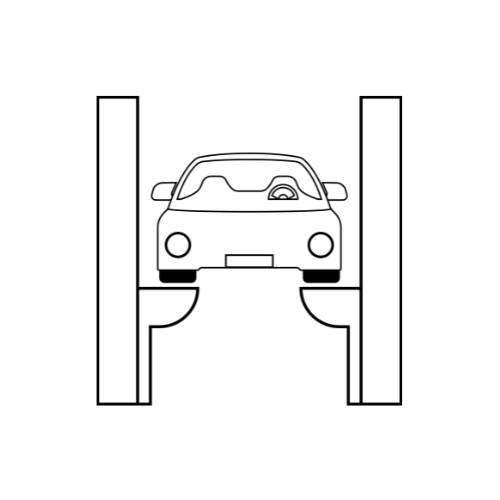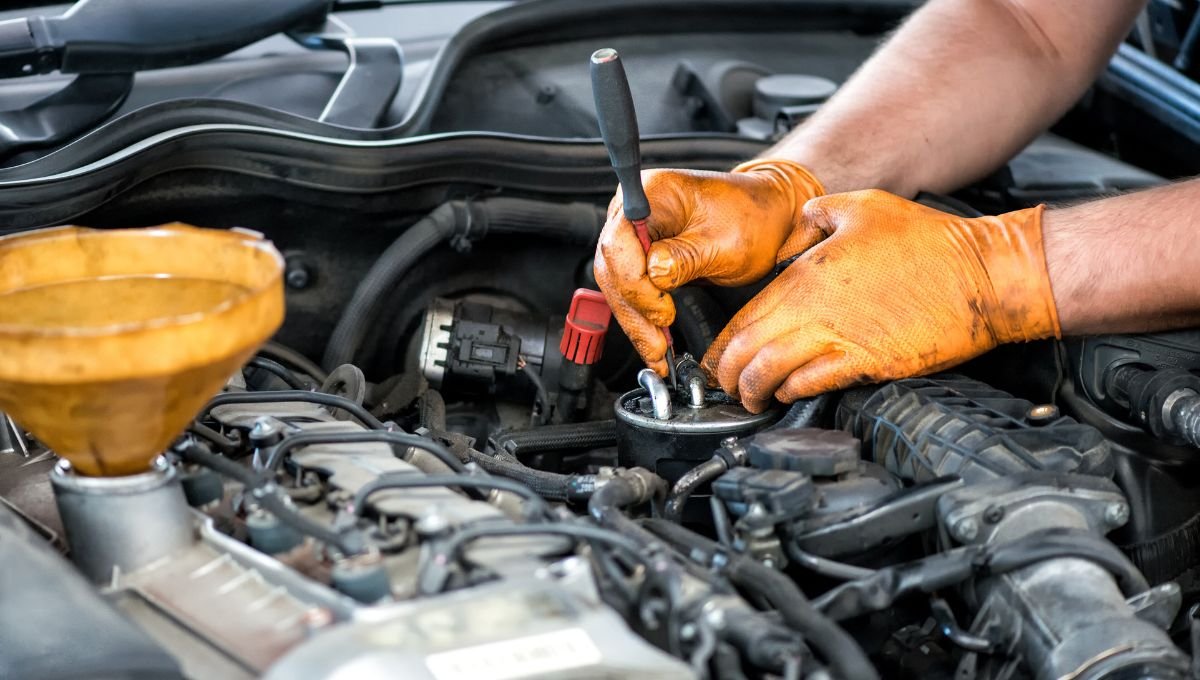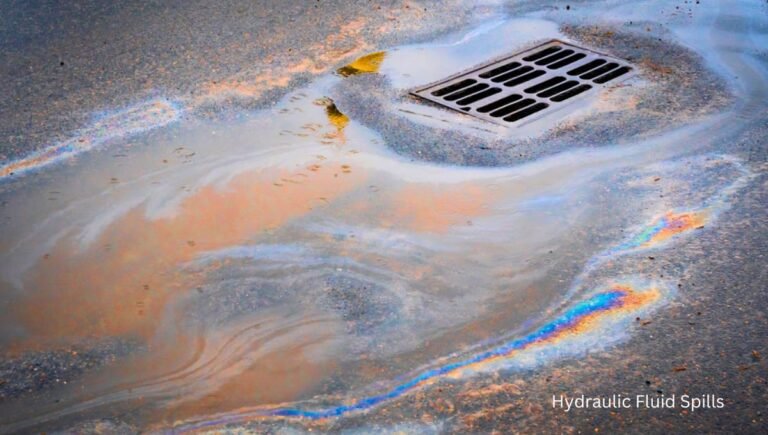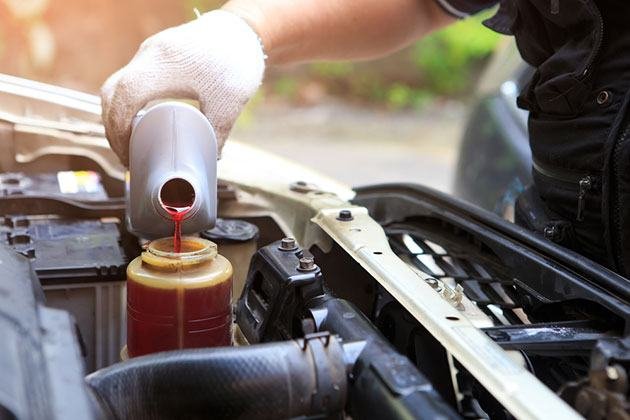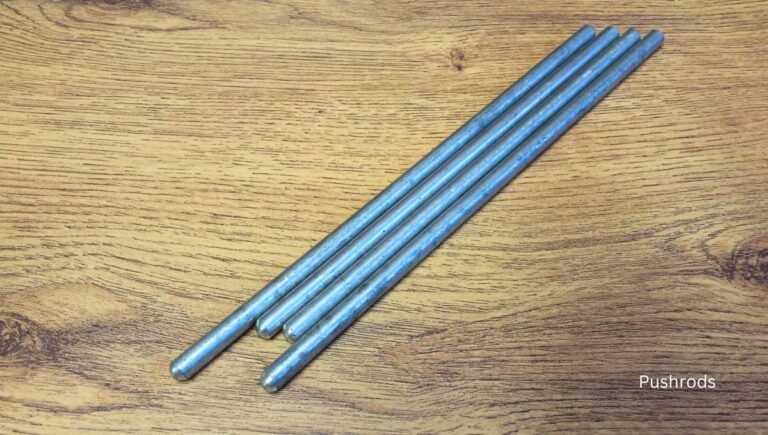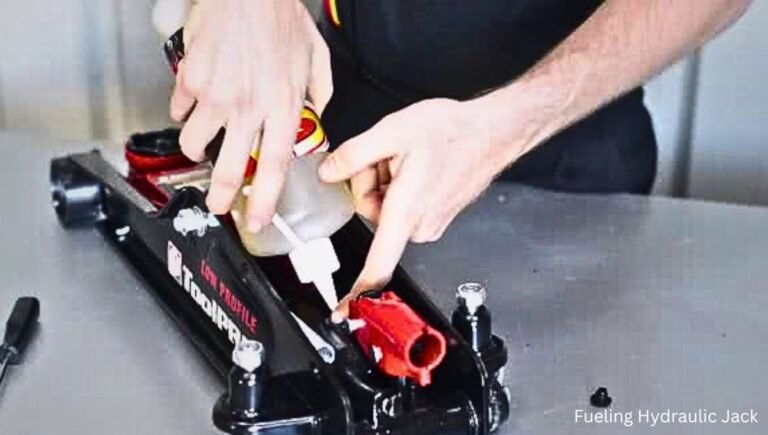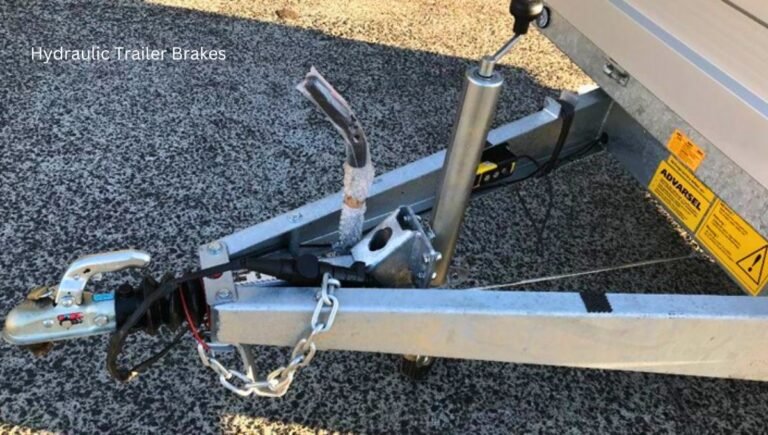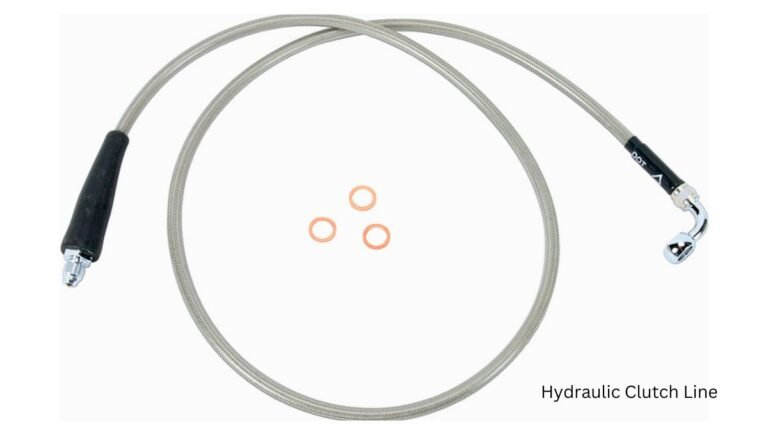How to Get Diesel Out of Hydraulic Fluid? Quick Solutions!
To get diesel out of hydraulic fluid, drain the contaminated fluid and replace it with fresh hydraulic fluid. Flush the system thoroughly to remove any residual diesel.
Hydraulic systems are critical for various machinery and equipment, ensuring smooth and efficient operations. Contamination of hydraulic fluid with diesel can compromise the system’s performance, leading to potential damage and costly repairs. Promptly addressing this issue is essential to maintain the system’s integrity.
Draining the contaminated fluid and replacing it with fresh hydraulic fluid is the first step. Flushing the system helps remove any remaining diesel traces, ensuring optimal functionality. Regular maintenance and monitoring can prevent such contamination, extending the lifespan of your hydraulic equipment. Proper care and timely intervention keep your machinery running efficiently.
Introduction To Hydraulic Fluid Contamination
Hydraulic systems need clean fluid to work well. Contaminants harm the system’s efficiency. Diesel contamination is a common issue. Diesel in hydraulic fluid can cause serious problems.

Importance Of Purity In Hydraulic Systems
Clean hydraulic fluid ensures smooth operation. Pure fluid reduces wear and tear. It extends the life of the system. Clean fluid also prevents costly repairs.
Maintaining purity improves the system’s performance. It helps avoid unexpected downtime. Regular checks and maintenance are essential. This ensures the fluid remains pure.
Consequences Of Diesel Contamination
Diesel in hydraulic fluid causes various issues. Some major problems include:
- Increased wear and tear: Diesel reduces lubrication, causing parts to wear out faster.
- Reduced efficiency: Contaminated fluid lowers the system’s performance.
- System overheating: Diesel contamination can lead to overheating, causing damage.
- Corrosion: Diesel can cause corrosion in hydraulic components.
- Costly repairs: Contamination can lead to expensive repairs and replacements.
Preventing diesel contamination is crucial. Regular checks and maintenance help detect issues early. Keeping the hydraulic fluid clean is vital for system longevity.
Identifying Diesel Contamination
Detecting diesel contamination in hydraulic fluid is crucial for equipment health. It can prevent severe damage and costly repairs. Understanding how to identify contamination helps maintain optimal performance.
Visual Inspection Tips
Visual inspection is a simple yet effective method. Follow these tips:
- Check for discoloration: Diesel may cause a darker fluid color.
- Inspect for separation: Diesel might separate from hydraulic fluid.
- Look for foam: Contaminated fluid can create foam or bubbles.
Common Symptoms In Equipment Performance
Contaminated hydraulic fluid can affect equipment performance. Watch out for these symptoms:
- Reduced efficiency: Equipment may operate slower than usual.
- Strange noises: Listen for unusual sounds from the hydraulic system.
- Increased heat: Excessive heat may indicate contamination.
- Erratic movements: Equipment might move unpredictably or jerkily.
| Symptom | Description |
|---|---|
| Reduced efficiency | Slower operation of equipment. |
| Strange noises | Unusual sounds from the hydraulic system. |
| Increased heat | Excessive heat generation. |
| Erratic movements | Unpredictable or jerky movements. |
Immediate Actions Upon Detection
Detecting diesel in hydraulic fluid can be a critical situation. Immediate action is necessary to prevent damage and ensure safety. Follow these steps to address the issue effectively.

Safety Precautions
Before taking any action, prioritize safety. Diesel in hydraulic fluid can be hazardous.
- Wear protective gear: gloves, goggles, and overalls.
- Ensure proper ventilation in the area.
- Turn off machinery to avoid further contamination.
Initial Containment Strategies
Contain the contamination to prevent it from spreading. Quick containment can save time and resources.
- Isolate the contaminated system immediately.
- Use absorbent materials to soak up diesel.
- Collect contaminated fluid in a designated container.
Follow these steps to ensure safety and minimize damage. Acting quickly and carefully can make a significant difference.
Purging Techniques For Contaminated Systems
Contaminated hydraulic systems can lead to performance issues. Diesel contamination is a common problem. Purging the system effectively is crucial. Below are the best methods for cleaning your hydraulic system.
Draining The System
Draining the system is the first step. Follow these steps to drain the system properly:
- Turn off the equipment and let it cool.
- Locate the drain plug on the hydraulic reservoir.
- Place a container under the drain plug to collect the fluid.
- Remove the drain plug and let the fluid drain completely.
- Dispose of the contaminated fluid safely.
Flushing Methods
After draining, flushing is essential. It helps remove any residual diesel. Here are some effective flushing methods:
- Simple Water Flush: Use clean water to flush out the system.
- Chemical Flush: Use a suitable chemical cleaner for thorough cleaning.
- Air Flush: Use compressed air to blow out remaining contaminants.
Each method has its own benefits. Choose the one that suits your system best. Simple water flush is easy and cost-effective. Chemical flush provides deep cleaning. Air flush is quick and efficient.
Make sure to follow safety guidelines. Always wear protective gear. Ensure proper disposal of contaminated fluids. Proper purging techniques can save your hydraulic system from damage.
Cleaning Components
Cleaning the components is essential to remove diesel from hydraulic fluid. This process ensures optimal performance and prevents damage. Follow these steps to clean your hydraulic system effectively.
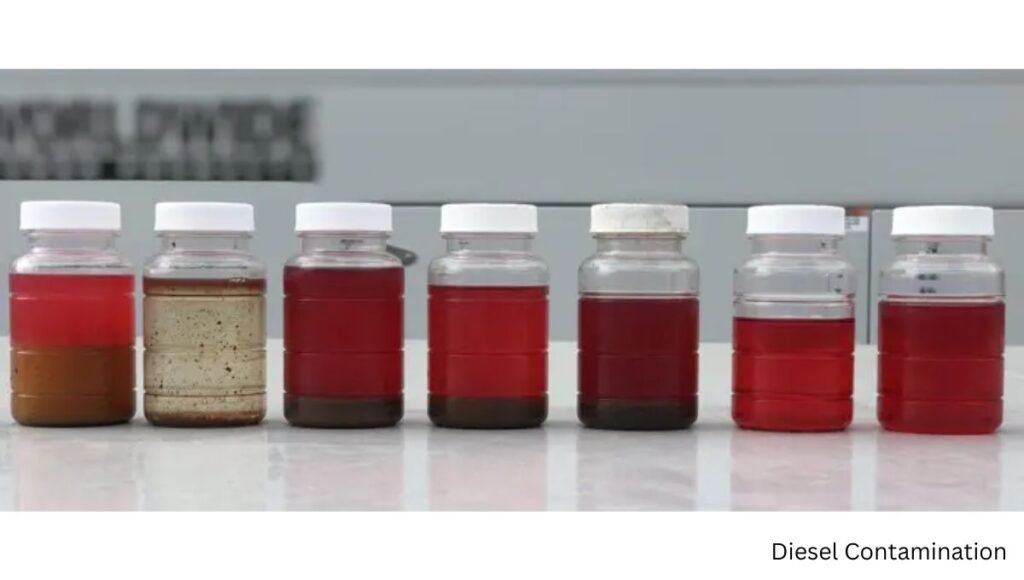
Filtering The Hydraulic Fluid
Start by filtering the hydraulic fluid to remove diesel contaminants. Use a specialized filtration system for hydraulic fluids. This system will separate the diesel from the hydraulic fluid. Here’s how to proceed:
- Turn off the hydraulic system to ensure safety.
- Locate the filtration unit in your hydraulic system.
- Attach the filtration system to the fluid reservoir.
- Run the filtration system as per the manufacturer’s instructions.
- Check the filtered fluid to ensure all diesel is removed.
Repeat the filtration process if diesel remains in the fluid. Ensure the filtration unit is clean and functioning well for best results.
Cleaning Or Replacing Hydraulic Filters
Hydraulic filters play a crucial role in maintaining fluid purity. Regularly clean or replace these filters to keep the system efficient.
Follow these steps to clean or replace hydraulic filters:
- Identify the location of hydraulic filters in your system.
- Turn off the hydraulic system to avoid accidents.
- Remove the filters carefully to avoid spillage.
- Inspect the filters for any damage or excessive dirt.
- Clean the filters using a suitable cleaning solution.
- Replace the filters if they are damaged or excessively dirty.
- Reinstall the cleaned or new filters back into the system.
Regular maintenance of hydraulic filters prevents diesel contamination. Always use high-quality filters for better performance and longevity.
Preventative Measures
Keeping diesel out of hydraulic fluid is crucial. It maintains the efficiency and lifespan of your machinery. Preventative measures can save time and money. They reduce the risk of contamination.
Best Practices For Fuel Handling
Proper fuel handling is essential. It helps prevent contamination of hydraulic fluid.
- Use dedicated containers for diesel and hydraulic fluid.
- Label containers clearly to avoid mix-ups.
- Ensure containers are clean and free from debris.
- Train staff on proper fuel handling procedures.
Investing in quality fuel storage solutions can help. Make sure fuel is stored in a cool, dry place. This minimizes the risk of contamination.
Regular Maintenance Schedules
Regular maintenance is vital. It ensures the integrity of your hydraulic systems.
| Maintenance Task | Frequency |
|---|---|
| Inspect hydraulic fluid levels | Daily |
| Check for leaks and contamination | Weekly |
| Replace filters | Monthly |
| Flush hydraulic system | Annually |
A consistent maintenance schedule can prevent diesel from mixing. It also helps identify potential issues early. Address problems promptly to avoid costly repairs.
Choosing The Right Hydraulic Fluid
Finding the right hydraulic fluid is crucial for your equipment’s performance. The right choice ensures smooth operation and longevity. This section will guide you on how to choose the right hydraulic fluid.
Criteria For Selecting Hydraulic Fluid
Consider the following criteria:
- Viscosity: The fluid’s thickness affects system efficiency. Choose the right viscosity for your climate and machinery.
- Temperature Range: Ensure the fluid works well in your operating temperatures. Cold weather needs a different type than warm weather.
- Compatibility: The fluid must be compatible with your system’s materials. Check for any chemical reactions.
- Anti-wear Properties: Protect your system’s parts with anti-wear additives. This extends the lifespan of components.
- Filtration: Look for fluids that support efficient filtration. Clean fluid keeps the system running smoothly.
Dealing With Mixed Fluid Types
Accidental mixing of fluids can happen. Here’s how to deal with it:
- Identify the Contaminant: Determine what has mixed with the hydraulic fluid. Diesel is a common contaminant.
- Drain the System: Remove all the mixed fluid from the system. Use a proper disposal method.
- Flush the System: Use a compatible fluid to flush out any remaining contaminants. This ensures a clean system.
- Refill with Correct Fluid: Refill the system with the right hydraulic fluid. Check the manual for specifications.
- Monitor Performance: Watch the system closely after refilling. Look for any signs of issues.
Professional Solutions And Services
Accidentally mixing diesel with hydraulic fluid can harm your machinery. Professional solutions are often the best choice. Professionals have the right tools and expertise. This section explains when to call a professional and the services they offer.
When To Call A Professional
Call a professional if you notice any of these signs:
- Strange noises from the machinery.
- Reduced performance or efficiency.
- Visible contamination in the fluid.
- Any strong diesel odor.
Professionals can diagnose issues faster and more accurately. They also ensure that your machinery is safe to use again.
Services Offered By Specialists
| Service | Description |
|---|---|
| Fluid Analysis | Testing the hydraulic fluid for contamination. |
| Fluid Replacement | Removing contaminated fluid and replacing it with clean fluid. |
| System Flush | Flushing the entire system to remove any remaining diesel. |
| Inspection and Repair | Checking for any damage and making necessary repairs. |
Professionals offer these services to restore your machinery. They ensure it runs smoothly and safely.
How Do You Remove Diesel From Hydraulic Fluid?
To remove diesel from hydraulic fluid, drain the contaminated fluid completely. Flush the system with a hydraulic fluid cleaner. Refill with fresh hydraulic fluid. Always check the manufacturer’s guidelines for specific instructions.
Can Diesel In Hydraulic Fluid Cause Damage?
Yes, diesel can cause damage in hydraulic systems. It reduces lubrication, leading to wear and tear. Always address contamination promptly to prevent costly repairs.
What Are The Symptoms Of Diesel Contamination In Hydraulic Fluid?
Symptoms include reduced efficiency, increased wear, and unusual noises. The hydraulic system may also overheat. Regular maintenance helps detect issues early.
How Often Should You Check Hydraulic Fluid For Contamination?
Check hydraulic fluid for contamination during regular maintenance. Ideally, inspect it every 100 hours of operation. Early detection of contaminants can prevent severe damage.
Conclusion
Removing diesel from hydraulic fluid is crucial for equipment longevity. Follow the outlined steps to ensure system efficiency. Regular maintenance and timely checks can prevent future contamination. A clean hydraulic system not only enhances performance but also reduces costly repairs.
Stay diligent and keep your machinery running smoothly.
